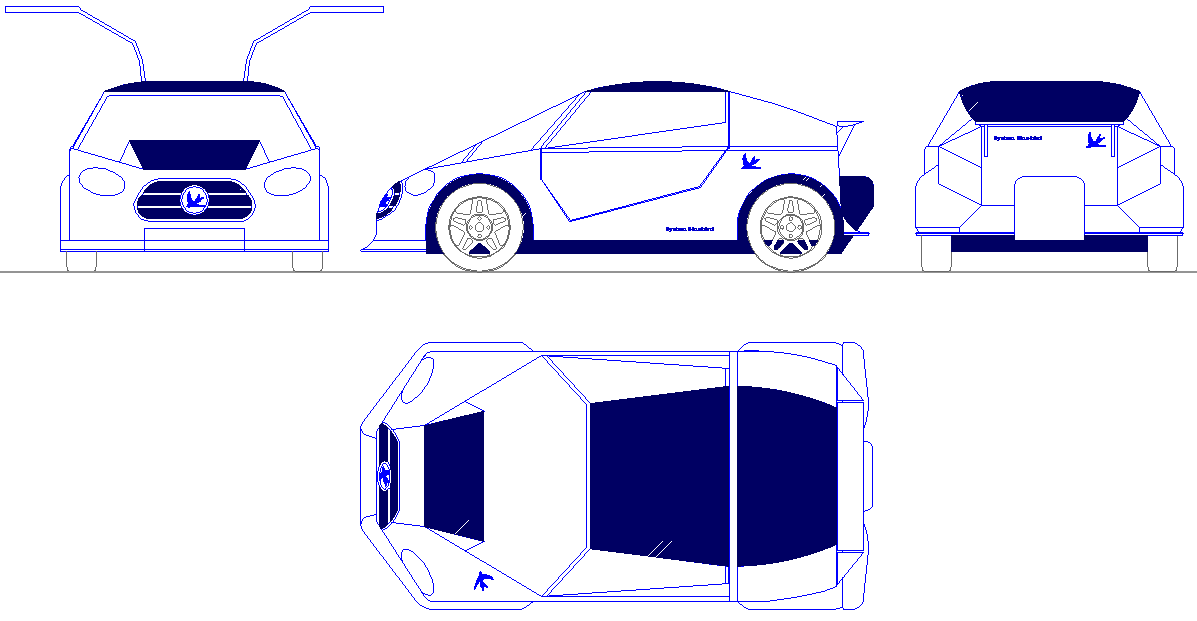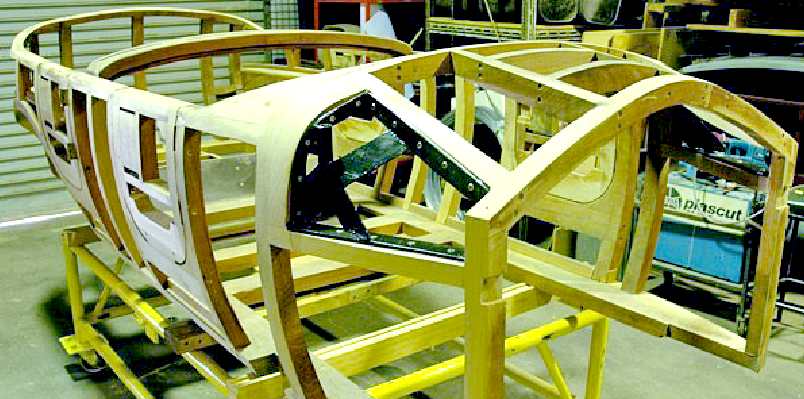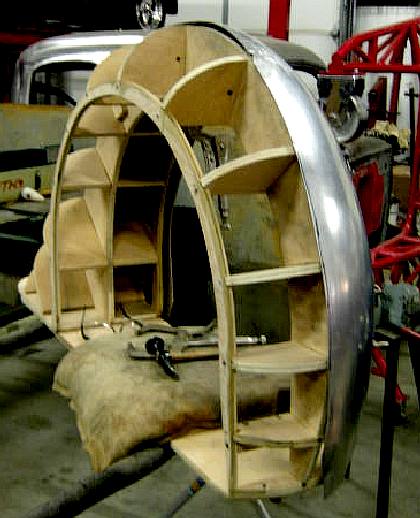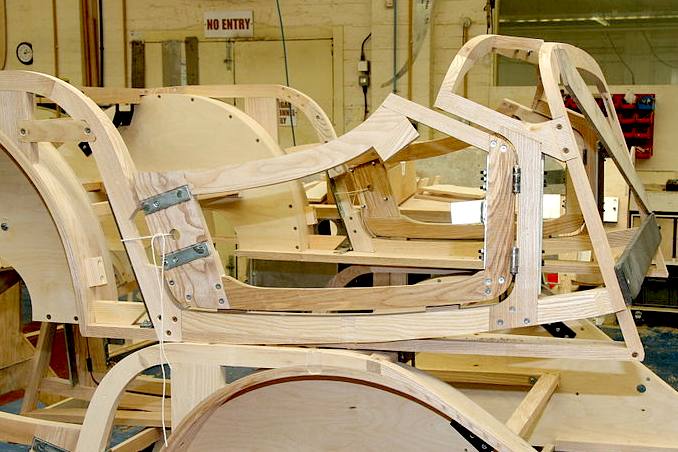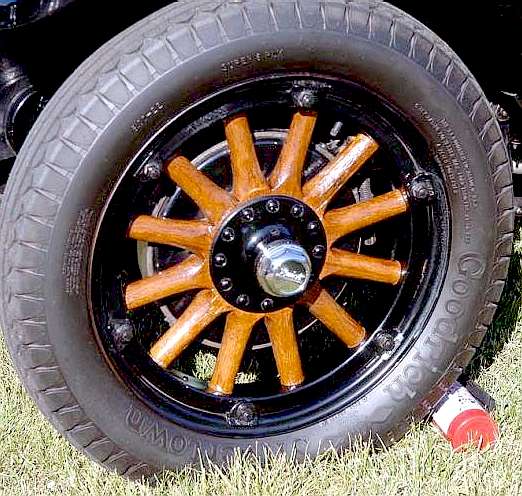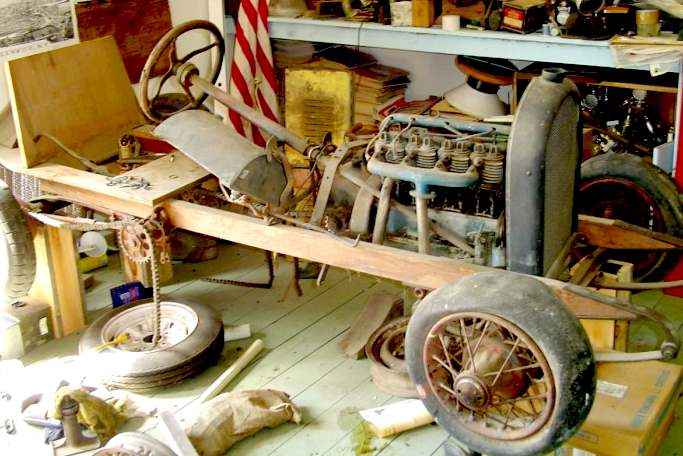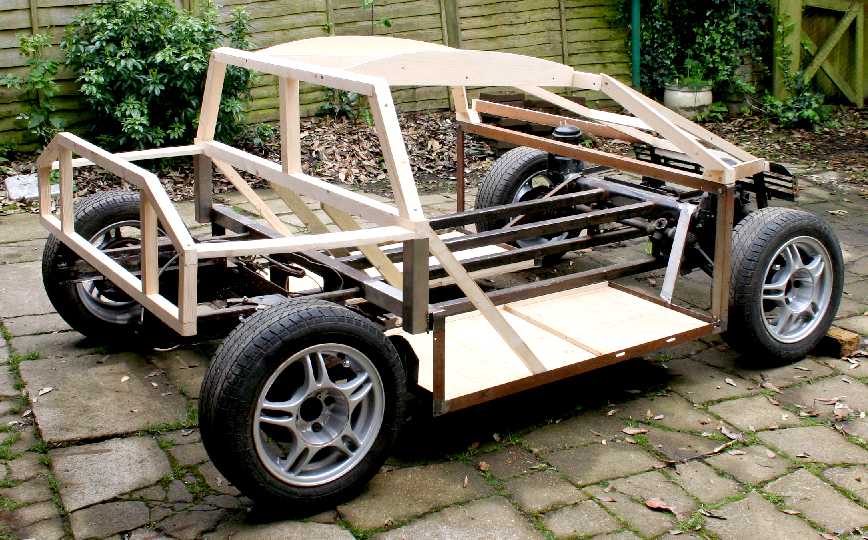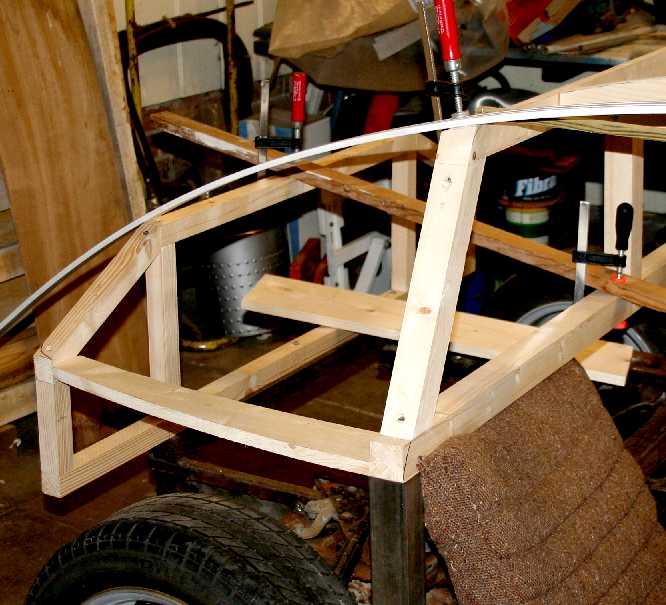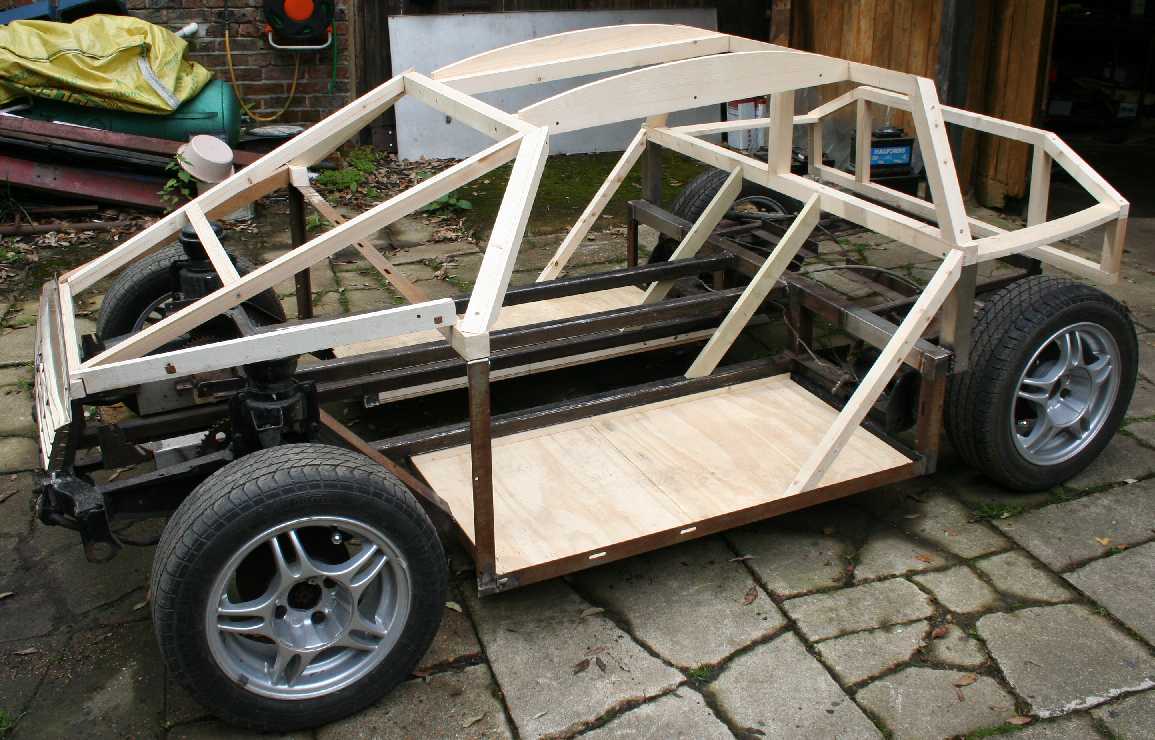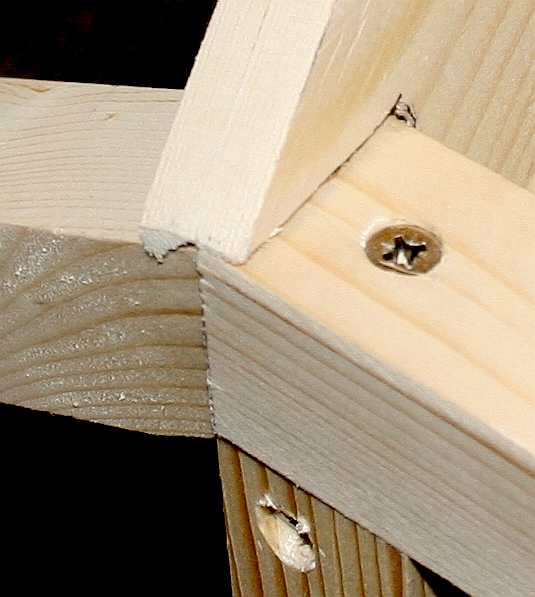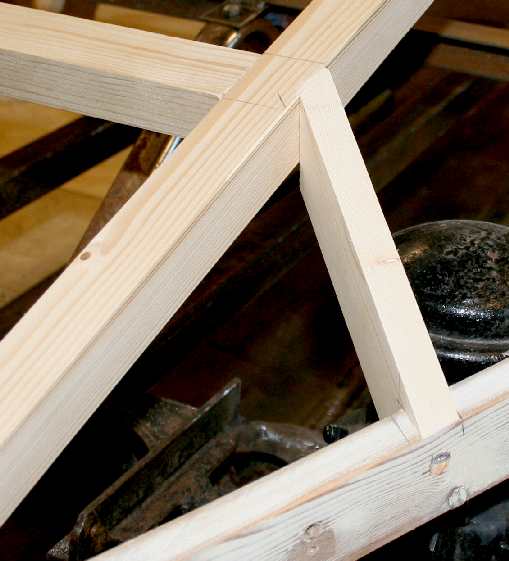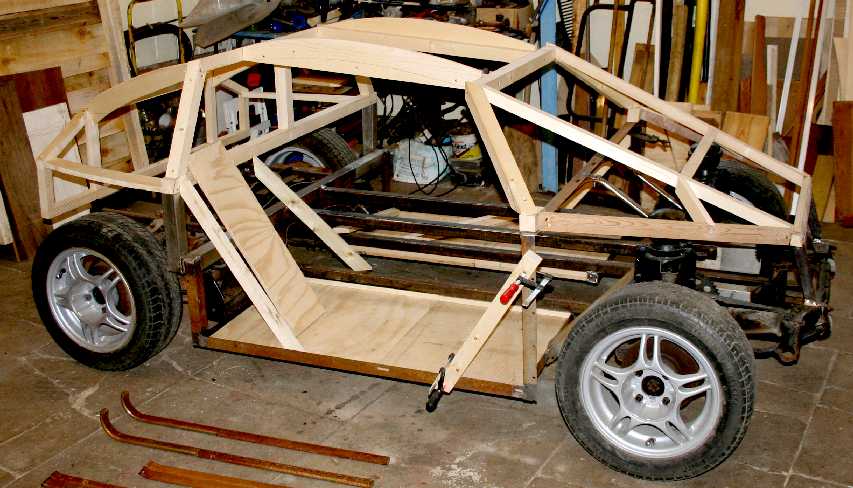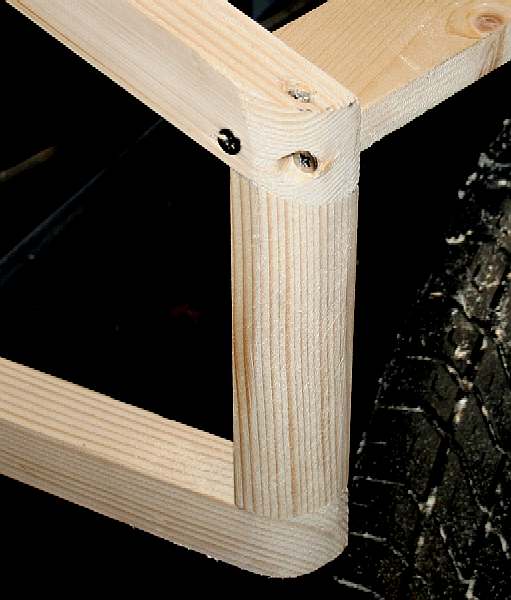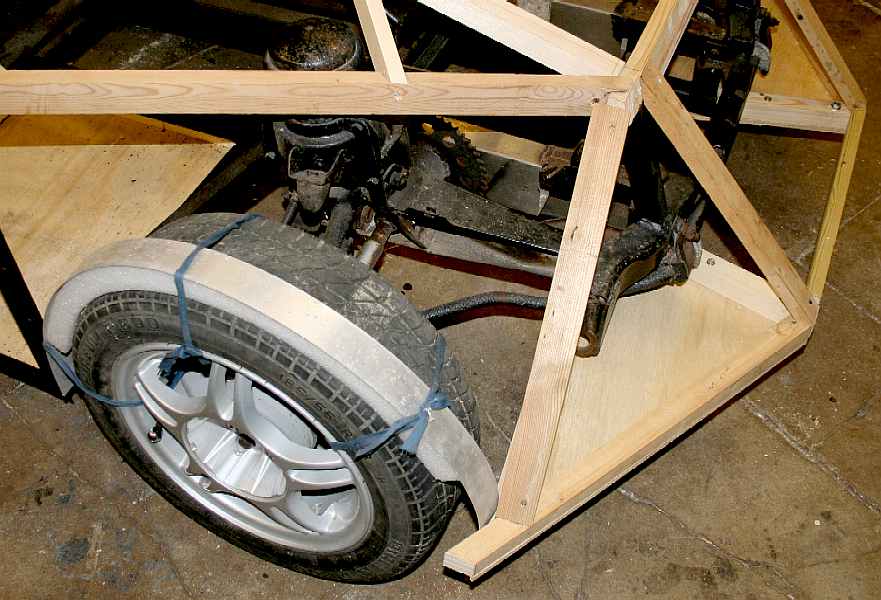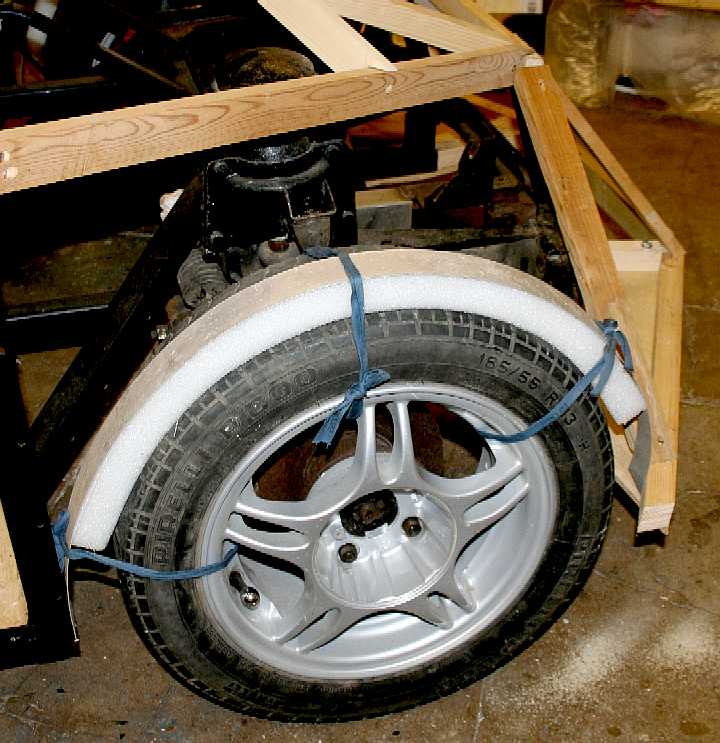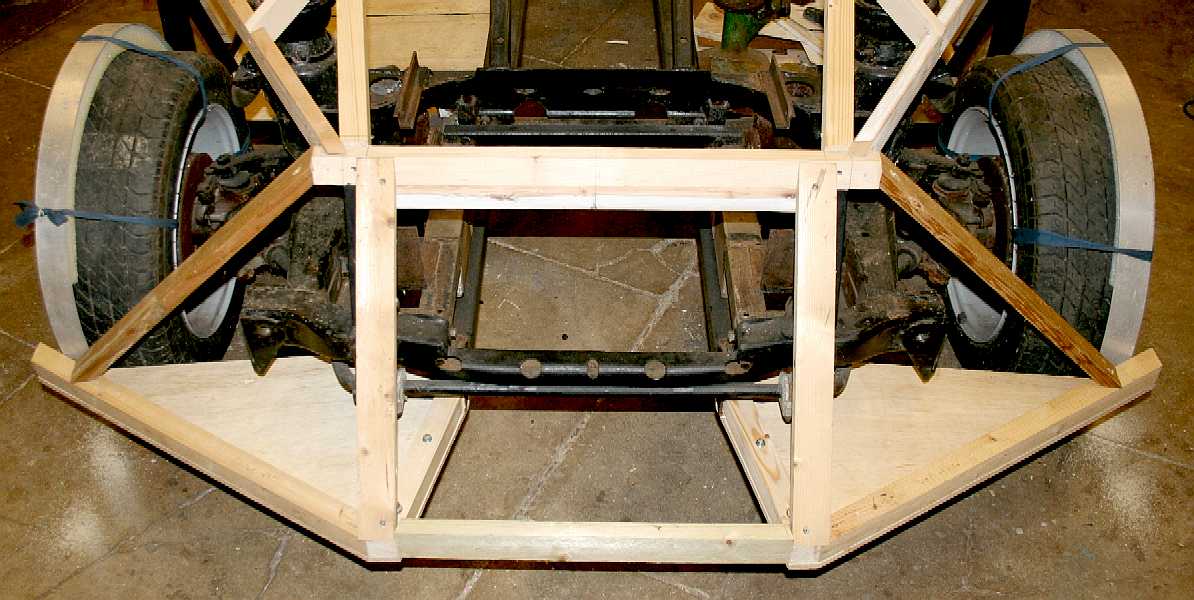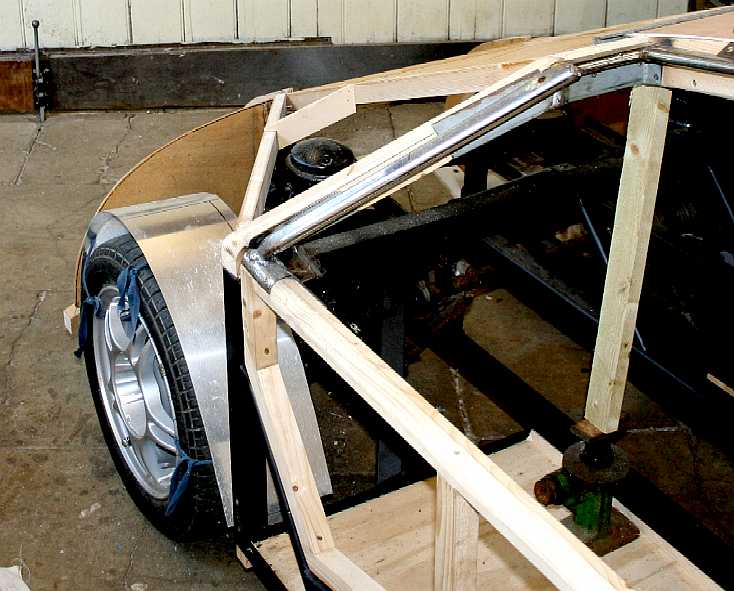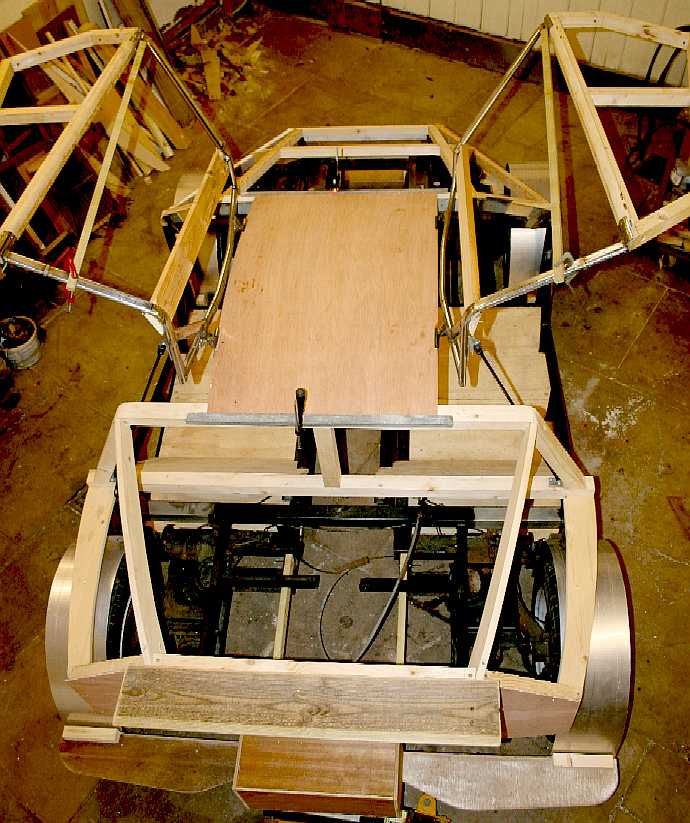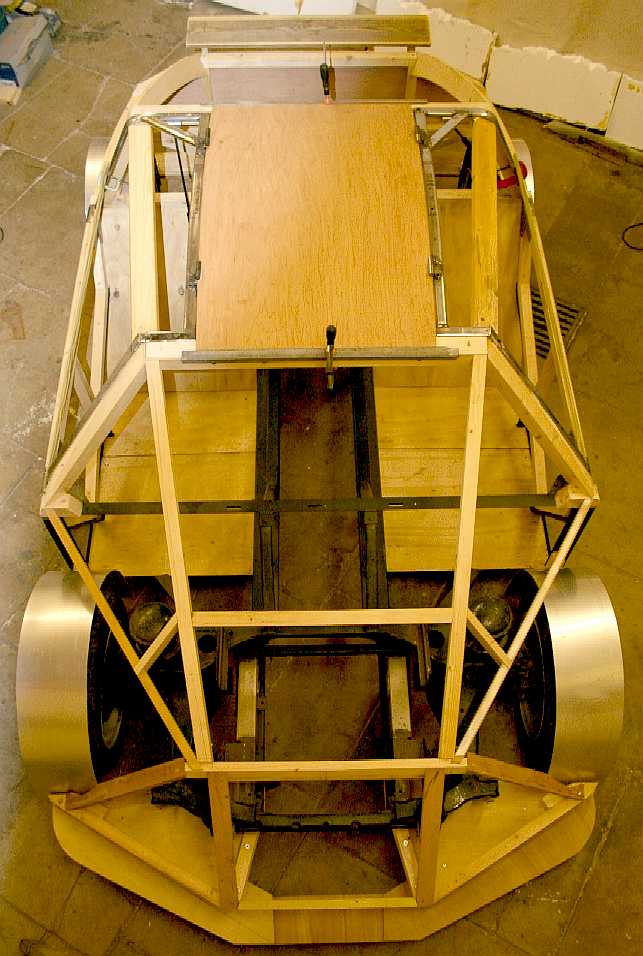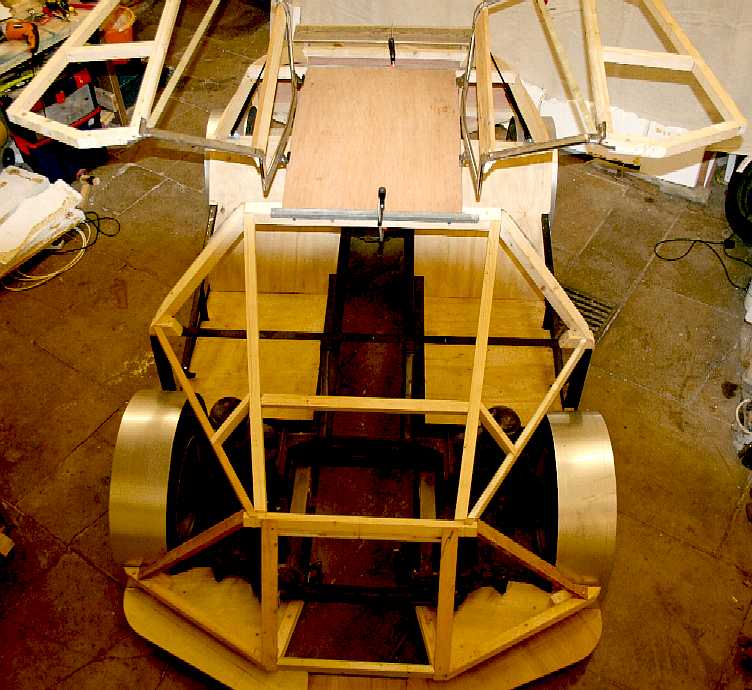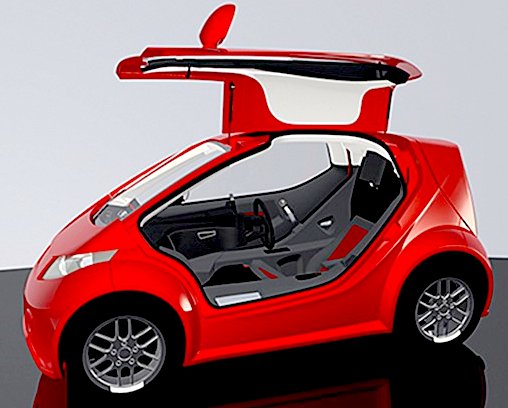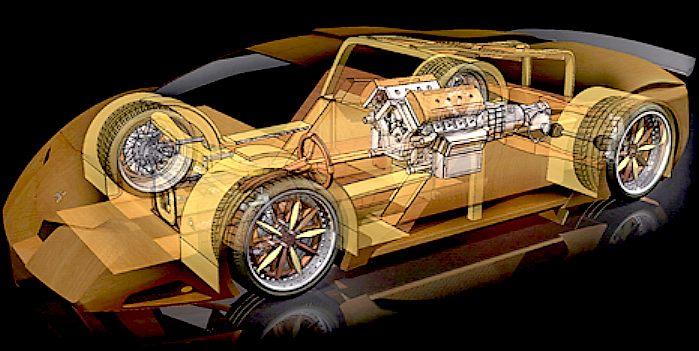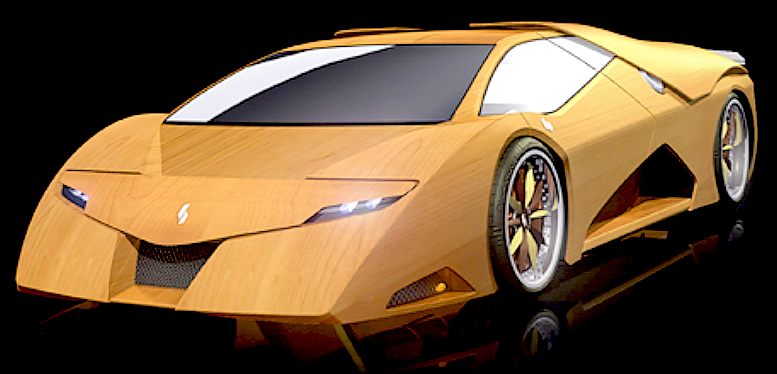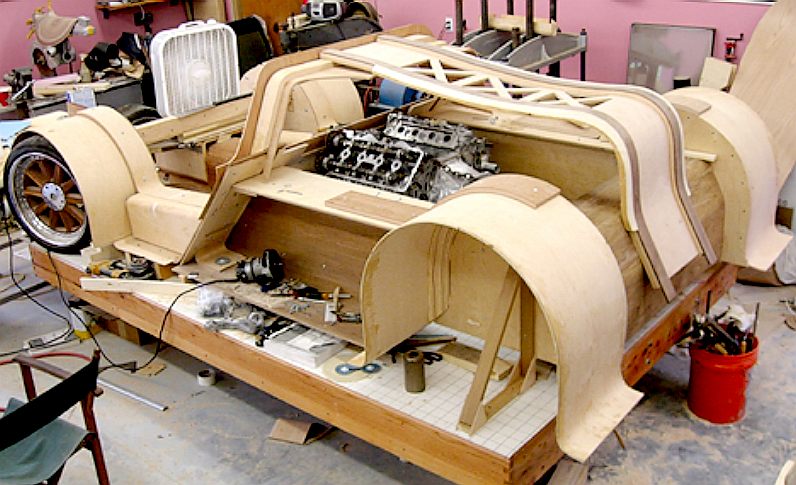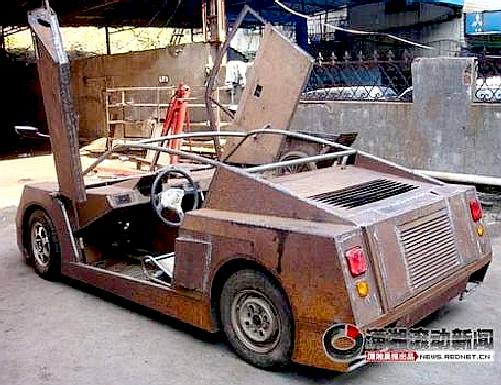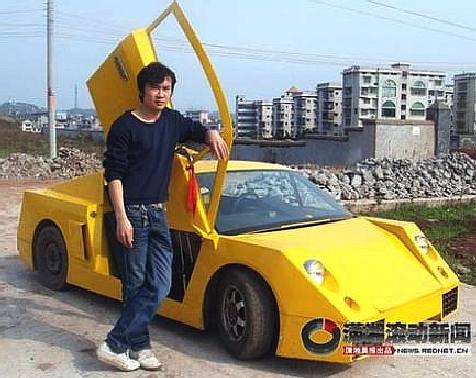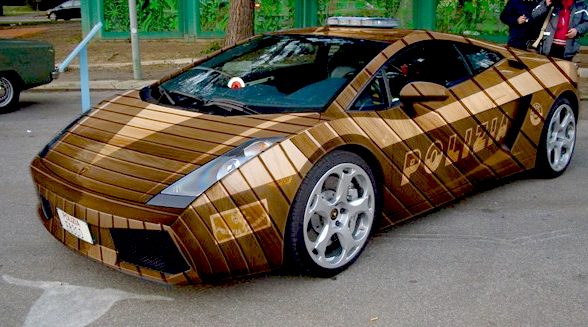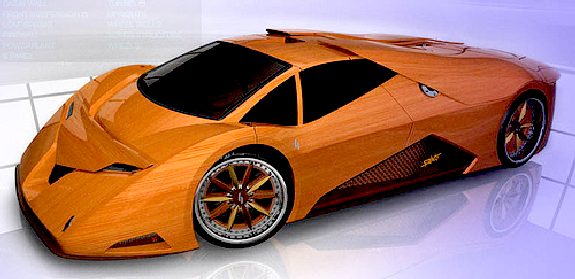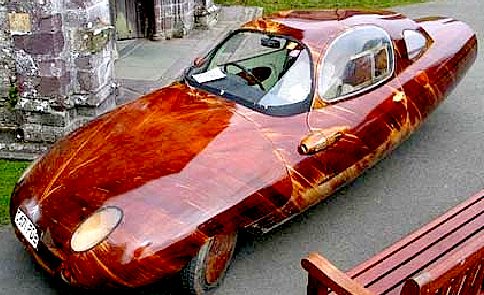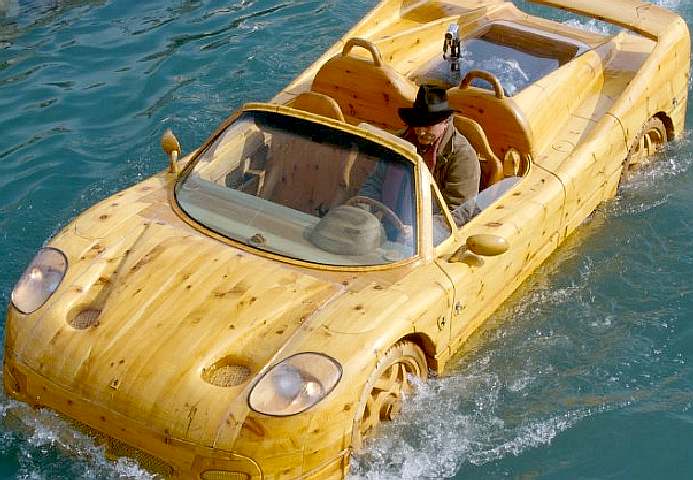|
ECOSTAR DC50 (BE4) - COACHWORK
|
|||||||||||||||||||||||||||||||||||||||||||||||||||||||||||||||||||
|
This is what we are aiming for. It all started with an idea and a bare frame that needed a lot of love. At that stage these drawings did not exist. In the space of seven months (to Nov 2014) - on a part time basis of less than a day a week - and in a disruptive technology investment depleted UK, with no help at all from officials or banking institutions - hence, with almost no development budget to speak of, bar that in our volunteer's pockets, we are now approaching a complete car concept. Ken Norris and Donald Campbell would have been proud of us. Fingers crossed for 2015.
COACHWORK HISTORY
Before motorized cars, horse drawn carriages and coaches were built of wood. Slowly the buggies and wagons progressed to using iron and then steel fittings for the wheels and steering. Finally, expensive carriages were fitted with springs to improve passenger comfort.
Early horseless carriages were also made from wood; even the main frame. Soon, the main chassis frame was formed from steel with cart springs supporting live axles. It was not long after that, that mass production saw pressed steel bodies coming off a production line by the thousands - and gone with that was the art of coach building, save in a very few specialist restoration and custom shops around the world. Some examples of which are shown below.
A very few cars are hand built with wooden bodies today, one such example is the exclusive Morgan. Bluebird Marine Systems are proud to be able to say that woodworking skills are alive and kicking in merry old Sussex.
ECOSTAR ECO CAR COACHWORK 2014
The boot begins to take shape, making allowance for the energy cartridges that are expelled from the rear, to allow the loading of a fresh cartridge from the front of the car. Roll on roll off.
That cut rear-arch section is fitted. Another softwood former is needed for the roofline, bearing in mind that the boot will open - hence, in effect, two frames will be needed - one inside the other - the door and the door frame. The wheel arches will be formed in aluminium and composites and flared into the body panels.
The seats are to be custom made to fit the average height and build of the Cannonball Run UK team. With the seating worked out in principle, the design of the gull wing doors can be roughed out.
More joint details - Left, the boot and rear roofline meet. Right, the forward sloping side-screens that allow the driver more vision. Cuts have to be very accurate when pinning with stainless steel screws.
The wooden buck with rear boot roofline formers fitted. The car is slightly bug like in the interests of increasing range between instant recharging cartridge swaps by the roadside. At the time of writing the Ecostar is thought to be the only road car that can change its own batteries without a service station in sight.
Now, back to the seats. You saw how we used an old office chair as the starting point for positioning of the dashboard, A and B pillars, etc. Finally, the office chair is to be replaced with an integrated custom build - and that means we have to start looking seriously at the gull wing doors - as is how to get in and out easily. May 2014.
Now, the backs of the seats, with the floor and side frames fitted and primed. It is time to reinforce the roof to take the hinges for the gull wing doors. May 2014.
Hinges fitted and gull wing doors well under way. May 2014.
Rear offside wooden frame shaped before the bodywork panel is applied. Softwood (European whitewood) is used for prototyping because it is sourced almost anywhere and it is economical. August 3 2014.
Making the bare wooden frame to support the nose cone and wheel arches (or wings). Both the wheel arches and nose cone have multidirectional compound curves. Suitably curved formers will be affixed to the straight line timbers, onto which will be laid layers of foam that can be shaped ready for woven roving or carbon fibre and epoxy moulding. The wheel arch will start out as a 200mm half-round arch (to replace the 50mm version shown here) that will be beaten into shape and fixed to the composite wing, or maybe even bonded to the wing at the mounding stage. Rivets are sure to play a part in the fixing process. August 5 2014.
In this picture you can see the basic angle of the nose from the timber formers, leading to the wheel arches. It's hard to say where the bonnet ends and the front wings begin. There will be a slightly raised centre section for the RoRo cartridge exchange system. We thought about having a moving panel, but as the clearance was almost there and moving parts add weight and complexity, a body mod was the favored option. All of this timber (buck) comes out once the moulding process is complete. There will be some steel supports welded in at high stress areas. The angle on the side timbers reminds us of John Cobb's Railton Mobil Special - the first wheel driven car to exceed 400mph in 1947 (394.19 mph average over two timed mile runs in opposite directions). We can't wait to see the curves. We think we know what John must have felt as his streamliner was being built for him. The only difference is that we are making the car ourselves. August 5 2014.
It looks a bit rough (and it is), but in this picture you can see the beginnings of a rounded bull-nose that flows into a similarly profiled wing - a little Bugatti Veyron like. An aluminium wheel arch is nestled in the wing, which will be shaped from foam, then molded in carbon fibre to mate with the wheel arch. Below this section will be another lip and built in wing to control airflow at the all important entry point, where we are trying to keep the CD as low as possible.
A view from the passenger door forward gives us a hint of the shape of the front of the car. You can see how we have progressed from a steel chassis, to a timber frame - and how that leads to the making of the bodywork to fit over the mechanicals.
Views from the rear, on the left with gullwing doors closed, and open on the right. Note also, the rear lower wing that is designed to straighten the airflow from under the car to some extent, that works in tandem with the boot mounted spoilers - two of which are missing in these pictures. Laminating the airflow on exit improves economy. November 2014.
Views from the front of the car with the gullwing doors closed and open. Notice how streamlined the car looks on the left when the doors are closed, compared to when they are open. It occurs to us that the gull wing doors would make great air brakes - provided that the car would not take off like a butterfly. November 2014.
GULL WING DOORS
The next stage is to build the gull wing doors. The swing of the doors is important when parking. A driver should be able to enter and exit the vehicle without too much effort. That sounds obvious, but with prototyping, a vehicle is typically built without giving too much thought to the ease for everyday use. This car is designed to be sold as a kit for DIY electric vehicle enthusiasts who would like more range than currently available from production EVs. Thus, the ease of entry has been given a great deal of thought - especially as this car is so low.
Colibri single seat electric concept cars with gull-wing doors. The object of gull-wing doors is to allow easier entry and exit for a driver. This can be very useful in low slung vehicles, where otherwise a driver would have to come out sideways very awkwardly to avoid hitting his head on the roof. By making the roof part of the door, that problem is overcome.
MAIL ONLINE FEB 2008 - The world's first wooden supercar has been unveiled - and it's faster than a Porsche or a Lamborghini.
This unusual (mostly) plywood bodied car has a top speed of about 55 mph and cost Chen Jinmiao from China about $3,000 to build. Chen was inspired by the Lamborghini Countach (weren't we all) in carrying this project through to completion. The bright yellow carriage may not be an Italian supercar, but it's not a bad looker in its own right - maybe Chen has a career in eco car design ahead of him. The self build was patterned after design drawings Chen downloaded from the Internet. Just like the real deal, his Lamborghini has scissor doors.
ECOSTAR DC50 EV COACHWORK FEATURES
This is a man who is serous about wood.
TIMBER SUPPLIES
Timber for this project came from a number of suppliers to include: Wenban-Smith in Lewes, Travis Perkins and Wickes in Eastbourne.
Treated timbers were not used, but structural plywood, etc, will be preserved with a PTI based formula such as that shown below.
ECOSTAR DC50 LINKS A-Z INDEX
EXTERNAL LINKS
The Daily Mail worlds first wooden supercar faster Porsche Lamborghini http://en.wikipedia.org/wiki/Dune_buggy http://www.ebay.co.uk/bhp/beach-buggy http://www.beachbuggies.co.uk/ http://dougsdistractions.blogspot.co.uk/2010/07/worlds-fastest-beach-buggy.html http://cars.uk.msn.com/features/the-10-greatest-ever-kit-cars?page=7 http://automiddleeast.com/2011-frankfurt-motor-show/californication-vol-2-vw-buggy-up http://www.dailymail.co.uk/news/article-516687/The-worlds-wooden-supercar-faster-Porsche-Lamborghini.html http://www.smartplanet.com/blog/bulletin/toyotas-smart-insect-car-adapts-learns-and-says-hello/ http://www.plugincars.com/one-seat-12000-ev-commuter-car-europe-129009.html http://www.horizonhydrogeneenergie.com/ http://horizon2020projects.com/sc-transport-interviews/storing-energy-in-horizon-2020/ http://horizon2020projects.com/sc-transport-interviews/powering-the-future/ http://ec.europa.eu/programmes/horizon2020/en/ http://ec.europa.eu/transport/themes/research/horizon2020_en.htm worlds-fastest-beach-buggy.html http://www.agnimotors.com/site/ Toyotas-smart-insect-car-adapts-learns-and-says-hello One-seat-12000-ev-commuter-car-europe
Contact Us: bluebird@bluebird-electric.net
|
|||||||||||||||||||||||||||||||||||||||||||||||||||||||||||||||||||
|
This
website is Copyright © 2015 Bluebird Marine Systems Limited.
The names Bluebird,
Blueplanet BE3,
Ecostar DC50™, Utopia Tristar™
and the blue bird in flight
|
|||||||||||||||||||||||||||||||||||||||||||||||||||||||||||||||||||
